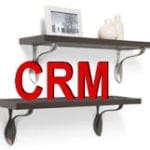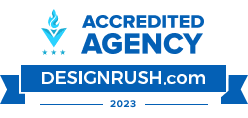Relieving the CRM “Tax” Burden

I often see charters and business cases with a list of desired CRM benefits that look like this list below:
- Better client relationships….
- Less client attrition….
- Improved ability to cross-sell….
- Increased revenue and profitability….
- Increased team collaboration….
- Improved efficiency in serving clients….
- Greater staff satisfaction….
- Cost savings….
These are all worthy objectives on which to build a business case for CRM – but none of them contain a WHY and a WHO? Why are each of these important? And to whom are they important?
Defining WHY and FOR WHOM We Need CRM
The WHY and the WHO are important because they define who the customer is. Are you focusing benefits on the lawyers? Their clients? The firm? Or the Marketing Department? Who cares about these items being improved? What benefit will they gain by having them improved? Do they see the need? Or are you selling to a prospect without a perceived need? Is it worth the cost to the “customer” in money, time and effort?
Making the CRM “System” Deliver the WHO and WHY Benefits to the “Customer”
To get the adoption you are looking for here are some suggestions:
- Set up meetings with key stakeholders. Interview them for their feelings and perceptions of the business case issues you have created. Do they agree these are problems important to solve? How do they see themselves benefiting from solving these problems? Collect feedback and assess findings. Does the feedback and the user’s perceptions of what they need/want strongly or generally agree and support the business case? Disagree? Hear any new desired benefits? Look for consistent responses as well as outlier responses. One to really pay attention to is the sensitivity to “privacy”. This often manifests through comments about “my clients” and any comments showing reluctance to share contacts and information. This is often the number one culture hurdle that will challenge success. Don’t assume it will change or go away. Develop the CRM plan knowing it exists. This culture risk mandates a “pilot” program that includes testing the culture’s willingness about sharing.
- Using your stakeholder interview findings, define what is important to each user group and each individual user. This will determine what functionality will be accepted and adopted (target three to start), be the basis for the “Communication Plan” messaging, and how to focus the “Training Plan”. Be certain they are designed to meet the unique needs of each user.
- The technical functionality of a CRM system comes factory installed. The challenge is they come factory installed with way more features and functions than any one firm can ever use, more than any user can be trained on and rarely configured in an optimal way to support your unique workflows. A good rule of thumb is let’s start by focusing on the top three requirements that will really move the needle. The top three vary by firm and even by practice and possibly individual users within a firm. The more tightly you can identify the top three and why they are important to each user or group, the more adoption you can expect. Configure, communicate and train on these three. You can add more features and functionality over time, but it’s important to walk before we run.
- Communication Plan – Are we communicating individual WIIFM benefits? Is it specific? Or is the message closer to “Tax man is here”?
- Training – Be prepared to train every lawyer right at their desk as the WIIFM adoption battle is often won one lawyer at a time. Video training may work for the Marketing team or as a primer. Group sessions as primers for attorneys can work (be sure to have food!). But real adoption only happens when lawyers are trained deskside on what is specific to them. Depending on the system plan for 15-30 minutes. Sound like a big effort? It is, and is critical to success.
- The final point is CRM is not a project that now ends. It is a fundamental change in how the firm does business. Plan on the communication, training and data quality effort to continue forever.
Data Quality Is Key
The last key to success with CRM is high quality data. Data is the oxygen that keeps your CRM system alive. If a user perceives the data is bad, they will quickly make the mental leap that the system is bad, cannot be trusted and there’s no point in using it. All other effort can go down the drain if the data quality is perceived as poor. Make a commitment to keeping data clean and up to date. It costs money, time and resources to have good data. Finding and training high quality data professionals is much harder than it might seem, but the investment is critical and worth it.
You can get there – but let’s not tax our CRM users. Let’s focus on passing the WIIFM audit.







